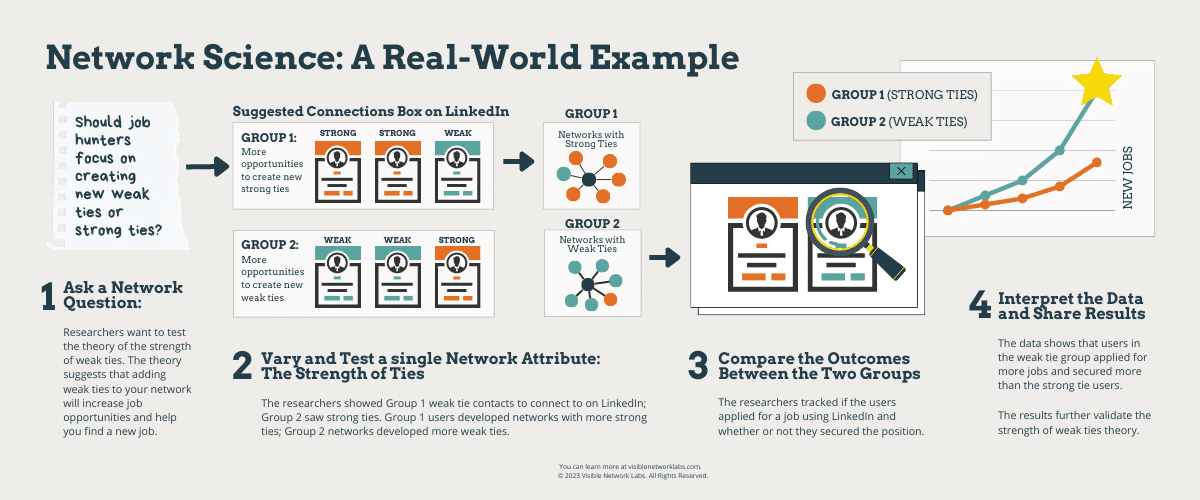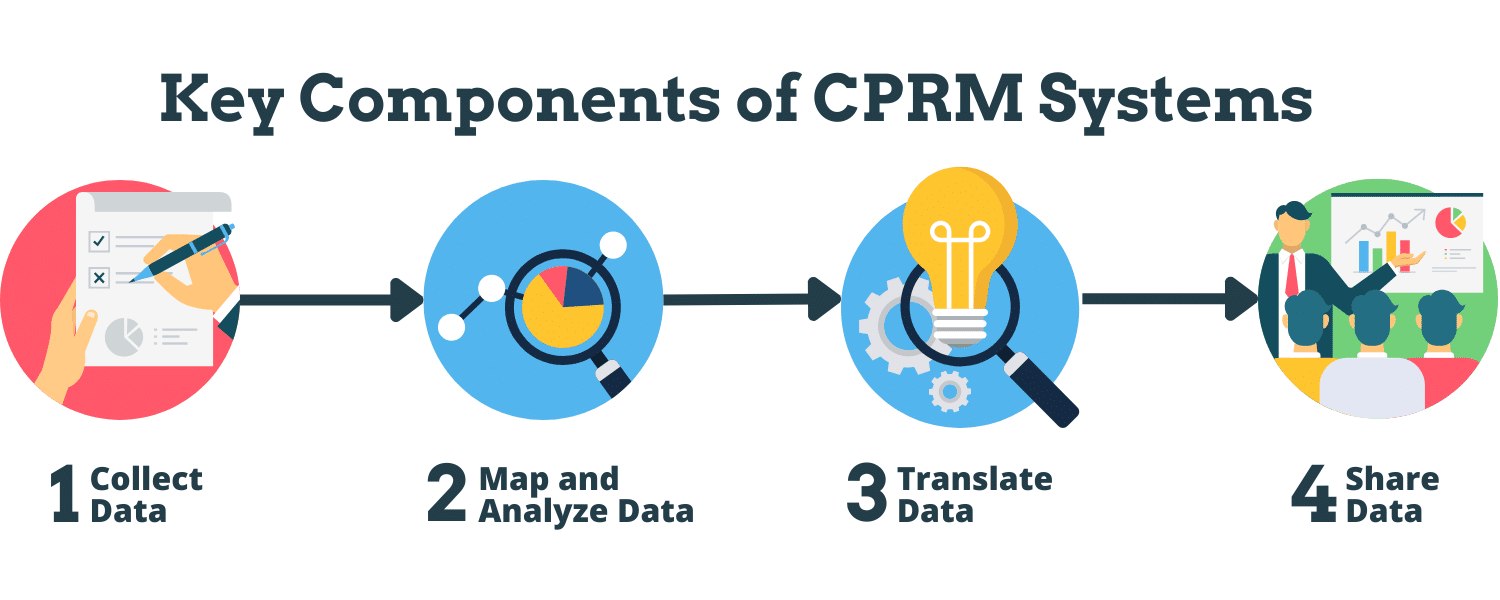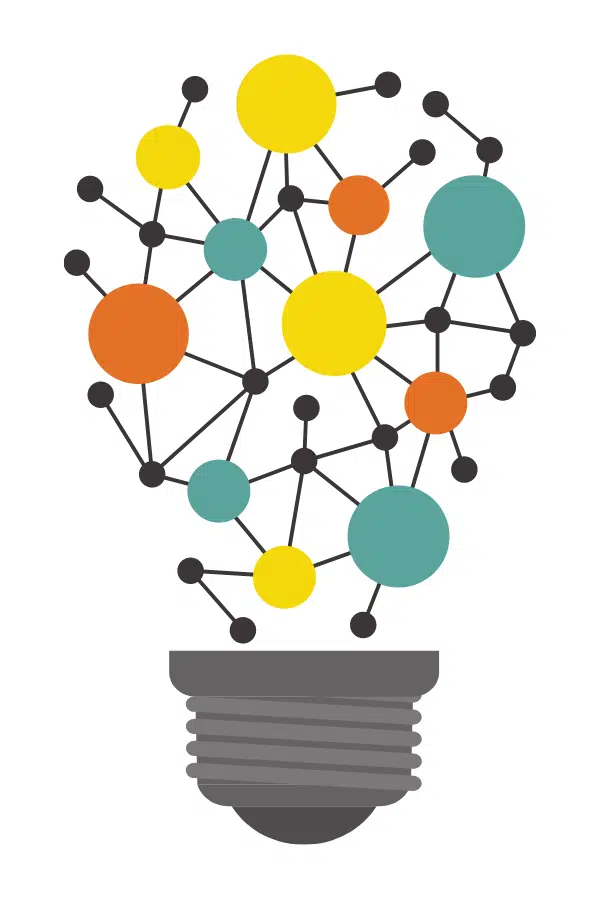What is CPRM?
Intro to Community Partner Relationship Management Software, Skills, and Strategies
CPRM stands for community partner relationship management. As a broad area of practice, it includes several dimensions: Your mindset and perspective towards your community partnerships, the skills and practices you use to manage them, and the software and systems you use to implement, track, and guide your approach.
You can learn more about these areas in our full Guide below.

CPRM 101: community partner relationship management
Community partner relationship management (CPRM) is the practice of gathering and tracking relational data to engage in evidence-based decision-making and strategic collaboration. It includes a set of specialized skills and capacities, tools and software for implementation, and the right mindset and perspective for approaching the task. In this article, we’ll introduce you to the core principles behind CPRM, including skills, software, and attitudes to help you implement it in your organization.
To skip ahead to a section below, click a topic in the Table of Contents below to scroll down automatically.
Table of Contents
Introduction
Organizations and institutions increasingly collaborate with various community partners to share resources, coordinate activities and align their strategies and goals. Just as individuals build a professional network of contacts they to leverage over time, most non-profits and public sector agencies cultivate a network of partners in the community.
These community partners provide many kinds of value to support your shared mission, such as:
- Resources: like funds, technology, volunteers, staff time, working space, or in-kind support,
- Relationships: especially with hard-to-reach populations and communities distrustful of institutions,
- Power & Influence: being able to influence the agenda or decision-making, formally or informally,
- Trust: partners often already have the trust of important groups that remain distrustful or uncertain towards you.
- Experience and Expertise: subject matter expertise or skills in a relevant topic, like evaluation or network science methods.
- Unique Perspectives: Diverse values, opinions, and backgrounds lead to uniquely emergent ideas and innovations.
Collaboration with partners in the community is clearly a great way to work towards shared goals, with many benefits. However, it takes time and resources to manage an ever-growing list of partners. It is harder to manage five employees than just one, but it is much more challenging to keep track of twenty partnerships than two.
Community partner relationship management, CPRM, involves creating and implementing a data-driven strategy for collaboration with a network of partners. Instead of focusing on building more and more partnerships, you use data to develop a specific strategy of who you’ll work with – and how you will work together – to achieve your goals best. The right skillset and a few essential tools help you use data to inform your approach and implement it effectively on the ground.
The practice of CPRM includes:
- Strategies for managing and strengthening your network of community partners,
- Skills for working with diverse groups in a network environment,
- Software for collecting, tracking, and translating data into action steps and strategies.
In the sections below, we detail these three essential elements of CPRM and our approach to implementing them.
Why is CPRM Beneficial?
In most organizations, the status quo includes passive management of their community partnerships. This limits their ability to leverage their relationships and create the most significant collaborative advantage possible. Here are some examples of what passive CPRM looks like in terms of strategy, skills, and software – and why it is so problematic.
The Status Quo Strategy
Organizations with passive CPRM tend to focus on creating as many partnerships as they can – without any overarching strategy or approach to guide how they should be creating partnerships. The result is usually exhaustion; with staff spending so much time maintaining relationships, they get little out of them – and might even lose value through them. As with most strategies, you have to prioritize your scare resources to best reach your goal.
A CPRM strategy explains how you will build the least number of new partnerships necessary to reach your goals.
For example, it may prioritize certain sectors or focus areas where you lack influence or connection. It may emphasize strengthening existing partnerships instead of new outreach. Whatever approach it endorses, the key is to ground it in research and data about your network’s pre-existing strengths and weaknesses, as well as threats and opportunities in the broader community. This evidence-based approach takes much of the guesswork out of your community partnerships. It makes it easier to connect the dots between your overall strategy and day-to-day relationships with partners.
The Status Quo Skillset
Most public servants and non-profit staff are expected to build and manage partnerships as a part of their job – even though there isn’t much formal training in this area, both in university degree and professional development programs. This results in staff relying on what they know well from public service: accountability mechanisms, governing boards, hierarchies, and planning methods that often don’t align with community-based practices.
A CPRM skillset includes the capacity to work with diverse organizations with varying values and perspectives to achieve shared goals?
For example, a public health department working with marginalized populations like AIDS patients or those experiencing homelessness might want to invest in training for their team to work with these groups more effectively. Skill and knowledge development in areas like diversity, equity and inclusion, facilitation, active listening, and design thinking can help them build better collaborative solutions. Additional skills in relational data analysis, strategic planning, change and project management are all essential for actively managing your community partnerships using a strategy.
The Status Quo Software
The software and tools available for CPRM purposes are broad and diverse. Most organizations rely on free or cheap options that are affordable but were never designed with this case use in mind. For example, tracking your partnerships in an Excel spreadsheet might work at a minimal level – but it doesn’t allow you to take a community-wide perspective, contributing to a ‘more is better’ mentality (longer spreadsheets = more impact and progress). If a tool doesn’t provide the right relational data to guide a strategy, it may not be worth using.
CPRM software tracks how your strategy and tactics are working and guides you to adapt to better achieve shared goals.
Three Aspects of CPRM: Strategy, Skills, and Software
The three elements of community partner relationship management build off and support each other. Having a strategy and the right system is meaningless without the skills to use them – and being skilled and strategic isn’t helpful if you don’t have a system for tracking and guiding implementation. The next three sections introduce the strategies, skills, and software needed to implement community partner relationship managment.
I. Strategy: Cultivating a Network Mindset
The first step to start actively managing your community partner relationships is to develop a strategy that aligns with your goals. We find that many organizations take use a ‘more is better’ strategy when it comes to their partnerships. They focus on building as many relationships as they can – following the logic that more connections to more organizations lead to more benefits and value.
In reality, this approach usually leads to a never-ending cycle of emails, phone calls, meetings, and events with dozens of partners, coalitions, networks, and other collaboratives you find yourself connected. Instead of gaining a collaborative advantage that saves you time and resources, you spend most of your time maintaining relationships without accomplishing much.
You’ll need to start relationship budgeting to manage your partnerships strategically. Every organization – and individual – has a limit to the number of relationships and partnerships they can actively manage without becoming overwhelmed. This is their relationship budget. Using it as a framework for managing your network is one way to start thinking strategically about your partners in the community.
For example, consider a public health department trying to bring together a new health equity coalition. At first, their coordinator reached out to more than 50 different non-profits involved in addressing social needs in the community. However, she became overwhelmed with the response and the need to cultivate fifty separate face-to-face relationships.
After some initial struggles, she paused gathered some data to identify the ten best connected and respected non-profits in the community. She decided to focus on establishing relationships with them instead. With only ten individuals to meet with, she was able to develop some close connections and generate some trust through their shared mission and repeated interactions. These key groups in the community then helped engage the 40+ other non-profits to join the coalition, without the coordinator’s direct involvement – saving her considerable time and resources.
Network Science: A Tool to Develop Data-Driven Strategies
At Visible Network Labs, we inform and implement CPRM strategies using a network science approach. This field of study uses tools and methods like social network analysis to study networks of inter-connected nodes – and how the structure and quality of those inter-connections influence the outcomes they produce.
"Network science is the study of the collection, management, analysis, interpretation, and presentation of relational data.It is often used to understand how the structure of various social, physical, and biological networks and systems influence the outcomes they produce."
ULRIK BRANDES, GARRY ROBINS, ANN Mc CRANIE, STANLEY WASSERMAN
Network Example: The Strength of Weak Ties
In one of the most well-known network science studies, a researcher named Mark Granovetter discovered how the composition of your network influences your ability to find a job. He asked people about the size and quality of their professional networks and their experiences finding new jobs.
The results showed that his weak ties – relationships with acquaintances rather than close friends – were more important for finding a job than strong ties – our families and friends. The infographic below shows how a recent study by researchers at MIT tested and confirmed his theory using an experiment on LinkedIn. It’s a good example of how network science works:
- Researchers pose a question about how a specific network attribute affects a specific outcome.
- They use the network attribute as a variable in a test or observational study. In the example below, they vary the number of strong and weak ties within their network.
- The collect data on outcomes produced by the network in question.
- They use statistical testing to determine if there is a relationship between the network variable and outcome.
This process allows network scientists to create and test theories that predict how certain network attributes produce different outcomes – which is the foundation for evidence-based decision-making in a network environment, including networks of community partners.

Using a network mindset is helpful when creating, implementing, and assessing a community partnership strategy. It helps you consider the entirety of your relationships in the community as well as each of your partners’ interconnections – which normally go unacknowledged in strategic planning efforts. This is an important shift to help you manage the group effectively, leverage pre-existing relationships, and track your partnerships to know if your approach is working or not.
Tips for Creating an Effective CPRM Strategy
If you are new to this way of thinking, creating a strategy from scratch might feel overwhelming. However, we put together some tips and resources to help you get started. Here are a few things to consider to help create an effective CPRM strategy using a network science mindset and approach.
Tip 1: Establish shared goals using a collaborative, transparent process
The most important part of your strategy is your statement of intent: what do you hope to accomplish by working with a network of community partners? While many groups begin collaborating with a goal already in mind, the best collaboratives wait to formalize their goal until they have their community partners in the room with them. Creating a shared goal provides your partners a sense of ownership that promotes engagement and buy-in over the long run – so you don’t do most of the work yourself when initial excitement wanes.
Tip 2: Give each partner a role to play – and involve them when that role is relevant.
Many collaboratives invite all of their members to every event, function, and meeting, to ensure they do not feel left out. In reality, this creates a sense of expectation that people must always engage, when that is not always the case. Many partners refer to be given a clear role to play based on their strengths, and only asked to attend or engage when that specific role is required. This ensures members are involved and can contribute specialized expertise, experience, or resources, without being expected to show up 24/7. Get clear about your partner expectations and preferences on when to be included and when to be left alone.
Tip 3: Think about the lifecycle of your network of partners
Many collaborations form with an open-ended timeline and no clearly defined endpoint. This works in some cases, but it can also be a hindrance if it leads to conflicts over your purpose. Are you collaborating to achieve a specific goal – and basing your future on reaching it successfully? Or do you intend that your partnership will continue indefinitely to work on a wicked problem in your community? Make sure everyone is on the same page so you strategize accordingly.
Tip 4: Use our Network Strategy Worksheet to Think Through All Your Factors
Our team assembled a Network Strategy Worksheet to guide you through the process of developing a plan for your community partnerships using a network approach. It includes major categories to consider and options to choose from, including concepts like network governance, decision-making, membership, lifecycle, structure, goals, and more. Click here to download the worksheet and watch our accompanying video walk-through with Dr. Danielle Varda.
II. Skillset: Working with Diverse Partners
Community partner relationship management is a unique practice that requires specialized skills and capacities. Traditional management skills rely on top-down hierarchical controls to complete work, track progress, and institute change. In a network of community partners, authority and power are replaced with trust and authenticity as the agents of change – the engine that keeps the collaborative motor moving. Here are some reflections on the skills needed to engage successfully in CPRM.
The Network Leadership Framework
In 2013, our team started hosting the Network Leadership Training Academy – a three-day workshop designed to teach the skills needed for building, managing, and assessing networks of community partnerships. Over the 8 years of the NLTA program, working with and learning from more than 700 participants, we created a framework for network leadership that focuses on seven core competencies. It is a helpful model to think through the skills required for cross-sector collaboration.
While Network Leadership is just one of numerous different frameworks for distributed and collaborative leadership and management, we recommend it because it aligns closely with network approaches to CPRM strategy and software systems too – ensuring a close fit between all three elements of community partner relationship management.
The Network Leadership Skillset
Here are the seven components of Network Leadership according to the framework we developed by hosting the Network Leadership Training Academy for eight years.
Network leadership is something everyone needs. This is not a model only for backbone/leadership organizations, but is designed to help build network leadership skills of anyone interacting with others. This includes managers, partners, funders, advocates, community organizers, residents, clients, and many other types of people/organizations. Network Leaders need the skills and knowledge required to work with diverse groups and people with varying values, experiences, and beliefs.
Each community is different and each culture has varying ways of communicating and interacting. There is no one best approach to Network Leadership. Network Leadership builds skills and capacity in order to empower network leaders/members to adapt them to their context, culture, and community.
At the heart of Network Leadership is the concepts of interaction, relationships, systems building, and partnerships. Almost everyone is being asked to work across sectors in partnership with others in networks (referred to by many different names such as coalitions, partnerships, collaboratives, and collective impacts) in turn bridging across boundaries and interacting with both the usual and unusual suspects. Network Leadership focuses on ways that people, communities, and organizations interact and how relationships among and within relationships affect one another and their related outcomes.
Network leadership is focused on skills, not a prescribed list of “must do’s,” including a customized set of skills to successfully engage partners in collaborative work. Examples include:
- facilitation,
- active listening,
- evidence-based decision-making,
- strategic planning,
- communication,
- negotiation,
- conflict-resolution,
- change management,
- emotional intelligence.
Network leaders can manage and nurture relationships, but they need data and evidence to do it. Network leadership demonstrates how to build an evidence base by collecting and using many different kinds of data to make decisions. This is the key to building a strong network strategy, critical for network leadership.
With data and experience, Network Leaders practice reflection in collaboration with partners, stakeholders, and communities to determine action steps and strategies.
Network leaders use reflection to adapt their community partnership management and collaborative practices. Many types of data are used to inform thinking and decision-making, including network and relational data, process data, and outcome data. Adaptions occur on an ongoing basis – not every several years.
Network Science and Relational Data Skills
One of the harder skills to learn and master related to community partner relationship management is the ability to collect, analyze, and interpret relational data. Skills and methodologies from the network science realm, like social network analysis and relationship mapping, are essential tools in the Network Leader toolkit to help track, reflect, and adapt your CPRM strategy.
For example: You can use network science methods and metrics to map your relationships with community partners and identify the following:
- Which community partners are the most well-connected?
- Who are important gatekeepers of information in the community?
- Where is trust strong and where is it lacking in your network?
- How are partners collaborating and sharing resources?
- To what extent is power shifting across the network?
- How do partners feel about your success so far?
As you can see, relational data is a powerful source of collaborative insight related to trust, power and influence, resource-sharing, communication, and many other aspects of community partnership. However, in order to collect this type of data, you’ll need the right CPRM system and software to get the job done.
III. System: Translating Relational Data into Practice
A CPRM system is a tool for collecting, analyzing, and interpreting network relational data to help implement, track, and adapt your CPRM approach and strategy. Just as businesses use CRM systems to track their interaction with their customers, social impact organizations use a CPRM to do the same thing with their partners.
The idea of a dedicated CPRM system is still new and evolving, but there are several essential elements that set a CPRM system apart from other types of tools and software. Here are four key components they should include:
- Collecting Relational Data: CPRM software can help you measure and map relationships – your own and among your partners.
- Map and Analyze Relational Data: CPRM systems use social network analysis mapping and metrics to analyze and visualize data.
- Translate Relational Data into Action: CPRM systems include tools and insights to interpret your data and translate it into actionable insights to collaborate more strategically.
- Sharing Relational Data and Insights: CPRM software can help you share your findings using customized reports, dashboards, profiles, and other options.

The Four CPRM System Components
Here is a more detailed explanation of each of these four core CPRM system components.
1. Collecting Relational Data
Relational data is more difficult to capture than normal data, as it is structured differently and requires different collection methods. Standard survey tools like SurveyMonkey aren’t set up to manage or collect relational data, which must be stored in pairs to preserve the connections they measure. This is one of the primary was a CPRM system differs from a CRM platform – these track relationships but only using standard types of data – they do not collect or track relational data.
2. Mapping and Analyzing Relational Data
Software for community partner relationship management must be able to map relational data to help you see and understand the complete picture in your community. They also have analysis tools to explore these maps and your relational data to identify key players, gaps, and opportunities to leverage. The best CPRM solutions provide multiple ways to analyze and map data to provide the most insight possible.
3. Translating Relational Data into Actionable Insights
The most important step in any data analysis comes when you translate your data into action steps and insights you can apply to your work. Your CPRM should provide tools and information to help you translate your findings into recommendations you can use to collaborate more effectively. For example, our CPRM software comes with an Insights Library with Questions to Consider and Research Finding prompts to guide you while reviewing and reflecting on your relational data to generate action steps for your reports.
4. Sharing Data and Insights with the Community
Data can be difficult to share – but with a CPRM system, it should be easy. You should pick an option with robust reporting options to make your data and recommendations accessible to your community partners and other stakeholders. New options like data dashboards and community partner profiles provide even more options for sharing data using interactive and engaging formats and visualizations.
PARTNER Platform by Visible Network Labs
We created PARTNER CPRM specifically to fill the gap in data tracking tools for community partnerships. Over time, the simple tool grew into a complete platform for community partnership relationship management – our contribution to the emerging field of network leadership. With built-in tools for collection, analyzing, interpreting, and sharing relational data, it has all the core components you need in a CPRM, with additional features and functionality to make your job and collaboration easier and more effective.
Here are some of the PARTNER CPRM features that our users love and mention the most:

- Network Member Profiles
Displays all your network data and maps for each network member. Profiles share insights and create excitement around your project.
- Validated Community Partner Survey
Our 18-question survey has been used in hundreds of evaluations and peer-reviewed studies, providing a rich database for validation.
- Public-facing Data Dashboards
Share network maps, charts, and data with partners and the public with a custom dashboard accessible on any online browser.
- Expert Long-term Support
We provide onboarding & implementation support, capacity building, and training, & long-term support from our Customer Success team.
There are multiple ways to implement and access PARTNER, depending on your needs and resources. You can use it for one-time evaluations and assessments of your partnerships, or for ongoing management, real-time assessment and strategic planning over time. The software comes with subscription packages to implement on your own, or as enterprise packages where our team helps you implement it while building your capacity to do this kind of work in the future. Click here to learn more about PARTNER CPRM and get started.
PARTNER CPRM: A Network Data Tracking and Learning Tool for Community Partners
PARTNER uses social network analysis and network science principles to collect, track, and translate data into actionable insights to improve your collaboration. See the platform for yourself during a web demo with our team.

Implementing CPRM in Your Organization or Network
Implementing a CPRM strategy in your organization is an essential step towards more strategic collaborative management. Here are some factors to consider at each step of the implementation process.
Consider your needs and available resources
Before you get started, take time to assess the resources available for community partner relationship management. You may wish to consider if any of your partners have funds or resources available to contribute – especially if you intend to engage in your CPRM effort jointly with other partners. Be clear about your needs: what problems or pain points led you to this point? What do you want to change by instituting these new strategies, skills, and software? Keep these close to heart throughout the process.
Involve the right people and stakeholders
Who should be involved in your effort to implement a management strategy, skills, and systems for your partnerships? Start with any key leadership or decision-makers whose buy-in is essential for moving forward. Also consider those in your organization who already manage any community partnerships. Often, several different divisions, departments, or programs maintain relationships in the community. To have a comprehensive perspective on your network of partnerships, ensure that all of these contacts are included in your process.
Lastly, ensure that you include the right community partners. It may be tempting to send an invite to everyone you know – but that isn’t necessarily the most strategic approach. Instead, try to select partners who have specific expertise, experience, resources, or connections that are missing within your organization. It is also sometimes helpful to extend an open invitation to all partner to ensure they know they can attend your meetings if interested without feeling obligated to attend if they are too busy.
Develop goals and a plan for implementing CPRM
With your pain points or problem in mind, sit down with your core group of stakeholders and partners to create clear goals: What do you want to accomplish by managing your community partners? Here are some examples from our own previous projects:
- We want to identify and strengthen partnerships with low levels of trust.
- We want to build more relationships with specific marginalized communities in our region.
- We want to create a more densely inter-connected local public health system to improve the flow of ideas and communication.
- We want to shift our network towards more sub-groups with trusted partners bridging them together.
Your goal will vary according to your unique community context, the goals and prioritizes of your partners, and the needs of your network.
Overcome common challenges during implementation.
Here are some common challenges that arise while implementing community partner relationship management, along with some tips from our team on overcoming them.
Barrier: Sustaining engagement among partners after initial excitement wanes.
Here are some tips to sustain engagement among partners:
- Share data from your CPRM system to share the value of the process with all of your comment partners and create buy-in.
- Don’t overwhelm partners with invitations. Give each partner a role, and only invite them when that role is needed.
- Keep communication open: Share updates using multiple channels, like email, slack, social media, and phone calls, depending on each partner’s preferences, to ensure they don’t get left behind.
Barrier: Disagreements among partners over the goals the group should adopt.
Here are some ideas to deal with disagreements over your goals:
- Don’t come with a pre-determined goal or strategy: Remain open-minded to new ideas or approaches.
- Work with a facilitator: They have specialized skills for working through conflict to find common points of agreement to build off.
- Gather data about the issues that get discussed to validate concerns and provide evidence to drive group decision-making.
Barrier: Not enough resources to fund the collaborative activities.
Here is some advice for funding your community partnerships:
- Look for relevant grants and public funding: Many programs exist to fund groups taking a collaborative problem-solving approach.
- Consider self-funding with a membership fee structure among partners.
- Inventory what in-kind resources are available among your partners, like extra office space, staff time, software subscriptions, and other assets you can share and leverage for the joint community.
In Conclusion: CPRM Includes Strategy, Skills, and Software
Community partner relationship management is a formal practice and way of thinking to track and strengthen your collaboration in the community. Instead of passively managing partnerships one-by-one, CPRM involves taking a bird’s eye perspective to build, manage, and evaluate your entire network of community partnerships across your organization. The three most important components include:
- Strategies for working with your partners to achieve shared goals;
- Skills for collaboration and decision-making with diverse stakeholders;
- Software and systems for tracking and adapting your relationship management using relational data.
Frequently Asked Questions Related to CPRM
CRM is customer relationship management – managing and tracking your relationships and interactions with your customers and leads.
CPRM is community partner relationship management – managing and tracking your relationships and interactions with community partners in your area. It considers not only your direct relationships with partners but also their relationships with one another, so you can assess, leverage, and strengthen relationships across your entire community network.
The concept of community partner relationship management developed first in the field of population and community health. For example, the MAPP Framework in Public Health took a formal approach to build and manage partnerships to improve community health in the early 2000s. This approach is also popular in the non-profit community, foundations and philanthropic organizations, and in the world of academia and research.
Network science is a helpful framework for implementing community partner relationship management. It provides methods like social network analysis, relational data to assess community partnerships, and theories to drive quality improvement and strategic planning forward. We use a network science approach to implement community partner relationship management here at Visible Network Labs.
Additional Resources and Reading
Looking for more information about community partner relationship management? Here are some additional resources and websites to visit and read. If you have any resources you recommend we add, leave a comment below and we may add it to the list during our next regular article update. You can also send us a message below with your thoughts and suggestions. Thank you for sharing your insights with our community!
- The Benefits of Using a CPRM to Manage Your Network of Partners
- Let’s Practice Network Thinking and Strategy
- More Isn’t Always Better When it Comes to Community Partnerships
- Ecosystem Strategies Need CPRM
- How to Build Partnerships with Community Organizations
Connect with our Team!
Contact the VNL team to demo PARTNER™ or discuss a research or evaluation project. We can help you learn more about our services, help brainstorm project designs, and provide a custom scope based on your budget and needs. We look forward to connecting!
Email our team: hello@visiblenetworklabs.com
Send a message: Contact Us Here
